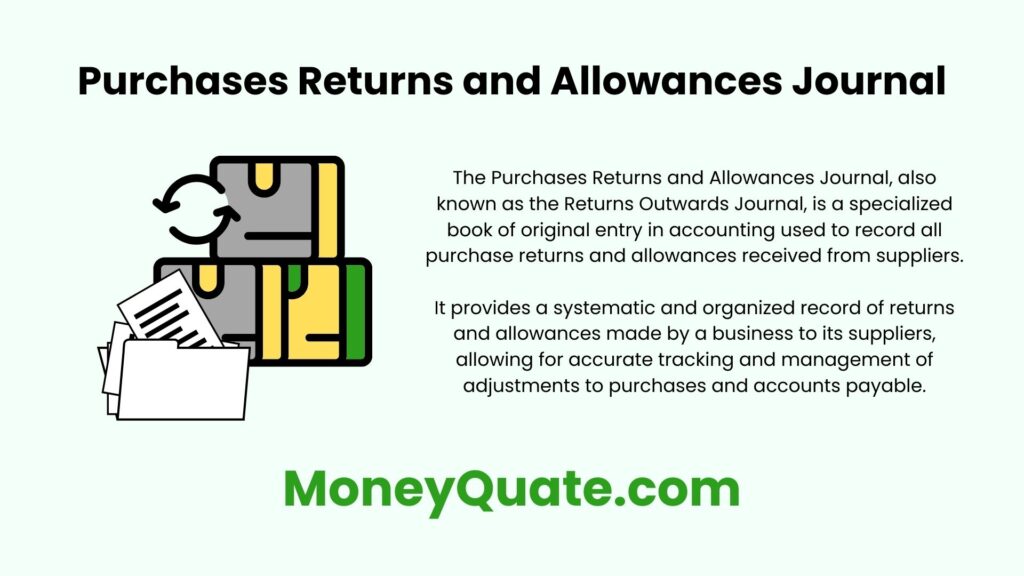Ever get stuck with an order gone wrong? Maybe you received damaged supplies or the wrong textbooks for your class. Businesses deal with these situations too, and that’s where the purchases returns and allowances journal comes in.
Think of it as a helpful notebook specifically for recording all those times you need to return items to a supplier or get money back for something you already bought.
As accountants, this journal keeps everything clear and organized. Let’s break it down in a way that’s easy to understand:
Contents
What are the Purchases Returns and Allowances Journal?
Imagine the purchases journal we talked about earlier, but instead of tracking things you buy, this journal focuses on situations where you need to:
- Return items: Did a box of printer ink arrive leaking? This journal helps track sending it back to the supplier.
- Get money back: Maybe there was a mistake on the invoice for your office furniture. This journal helps record the difference (allowance) you receive from the supplier.

Why Use This Journal?
There are a few reasons why businesses might need to use this handy journal:
- Oops, Something’s Broken! Sometimes, items arrive damaged or faulty. The journal helps track these returns made to suppliers.
- Not What You Ordered? Ever get the wrong size shirts delivered? The journal helps record returning those items and any adjustments made to the price.
- Price Glitch! If there’s an error on the original bill, the journal helps record any money you get back from the supplier to reflect the correct amount.
Making Returns Easy With The Purchases Returns and Allowances Journal
The purchases returns and allowances journal helps capture important details for each return or allowance, like:
- The date
- The supplier’s name
- What item is being returned
- How many items
- The original price you paid
- Why you’re returning the item or getting money back
Think of it like a pre-formatted table that ensures all the necessary information is documented for future reference.
This way, everything is clear and organized, making it easier to deal with returns and allowances.
Real-Life Example
Let’s see this journal in action! Imagine a bookstore uses it to track the following:
- They return 20 damaged novels (originally $10 each) to a supplier.
- They receive a $50 allowance from a supplier for a slight printing error in 100 textbooks (originally purchased at $20 each).
Here’s a simplified breakdown of what their journal entries might look like:
| Date | Supplier | Description | Quantity | Price | Reason |
|---|---|---|---|---|---|
| Oct 15 | ABC Books | Damaged Novels | 20 | $10 each | Damaged upon arrival |
| Oct 20 | XYZ Publishers | Printing Error Allowance | – | $50 | Printing error in textbooks |
The Bottom Line
The purchases returns and allowances journal might sound fancy, but it’s a simple tool that helps businesses keep their financial records accurate.
By tracking returns and allowances received from suppliers, businesses ensure their accounts reflect the true cost of everything they buy.
So next time you hear about this journal, remember – it’s not just about returns; it’s about keeping your financial records in tip-top shape!